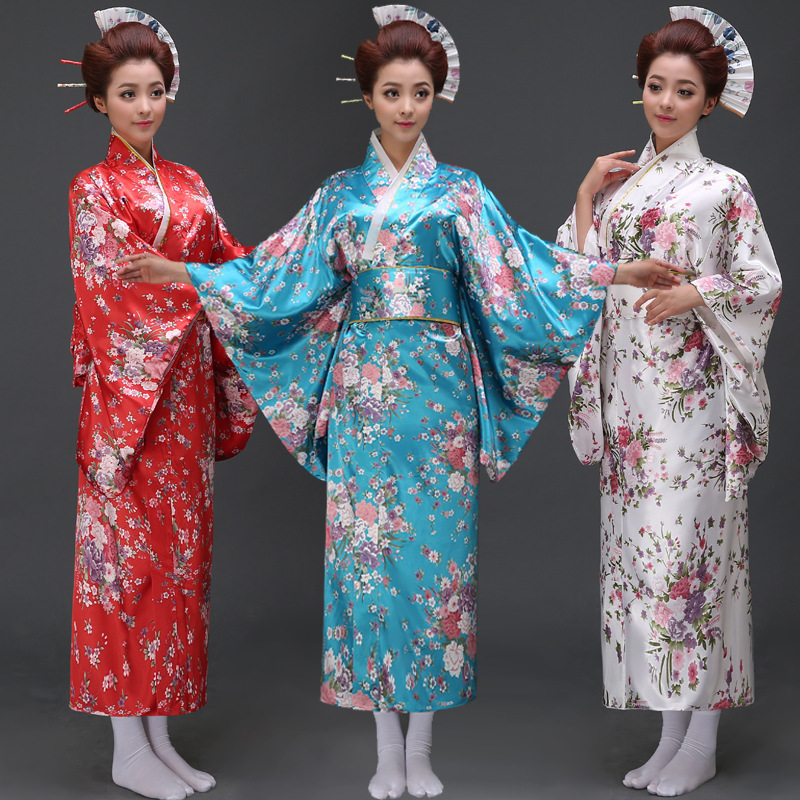The ladies traditional clothing is a kimono. The assembling of a kimono is usually passed down from mother to daughter. Today it is also taught in school. First, one puts on the tabi, which are white cotton socks. Then the undergarments are put on followed by a top and a wraparound skirt. Next, the nagajuban (under-kimono) is put on, which is then tied by a datemaki belt. Finally, the kimono is put on, with the left side covering the right, and then tied with an obi. (It is important to not tie the kimono with the right side covering the left because this signifies the dressing of a corpse for burial.) When the kimono is worn outside, zori sandals are traditionally worn on the feet.
The zori sandals look like a thick flip flop. Shown below:
The heeled zori sandals are typically worn on fancier occasions such as weddings. They are shown below:
The Japanese kimono has also become popular in pop culture. The pop-culture kimono does not have a belt and is more shawl-like. As seen in the image below.




